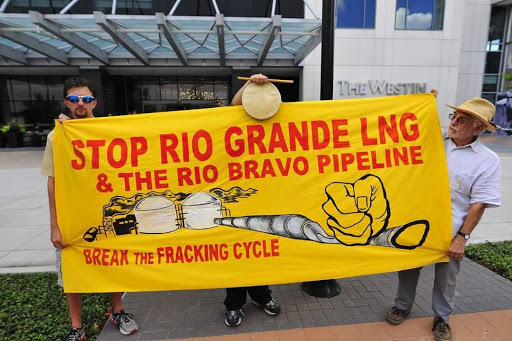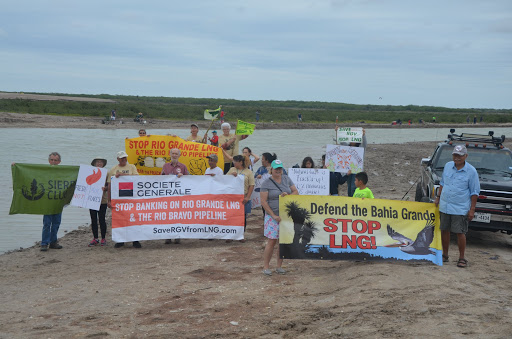
Today, the Federal Energy Regulatory Commission (FERC) released the final environmental impact statement (EIS) for the proposed Rio Grande LNG fracked gas export terminal and the 135 mile-long Rio Bravo Pipeline. Rio Grande LNG is one of three fracked gas export terminals proposed for the Rio Grande Valley, none of which have been approved.
The cumulative impacts of these three proposed projects would be devastating for local economies and public health. If built, Rio Grande LNG would be the second largest fracked gas export terminal in North America, releasing more than eight million tons of greenhouse gas pollution per year. The export terminal would be located immediately adjacent to low-income Latinx communities that would be subjected to dangerous air pollution, as well as increasing the demand for fracking across Texas. The Rio Bravo Pipeline, which would transport 4.5 billion cubic feet per day of fracked gas to the terminal, would threaten families along the route with the risk of leaks and explosions.
In the EIS, FERC recognizes that the project will have wide-ranging adverse environmental impacts. FERC attempts to downplay them by arguing that they will be mitigated or insignificant, despite the fact that the details of what that mitigation would entail and how well it would work are still in development.
"For years, South Texans have made it clear that we oppose Rio Grande LNG, the Rio Bravo Pipeline, and the other dangerous, unnecessary fracked gas projects proposed for our community. Our cities have passed anti-LNG resolutions, our school board has rejected a proposed tax cut for the project, and time after time we submit public comments and turn out to public hearings to send a clear message that this project would be all cost for our communities while fossil fuel executives reap all the benefit,” said Sierra Club Brownsville Organizer Rebekah Hinojosa. “We will not give up the fight to protect our communities, our local tourism industry, and our climate from this dangerous project.”
“These LNG terminals will have unacceptable and irreversible impacts on imperiled wildlife including the ocelot and Aplomado falcon,” said Defenders of Wildlife Senior Texas Representative Paul Sanchez-Navarro. “The environmental impact statements fail to carefully consider these impacts.”
“Rio Grande LNG would be the biggest polluter in the Rio Grande Valley, and could cost us local jobs in the eco-tourism and fishing industry, that depend on a clean environment,” said Marta Peña with Save RGV from LNG. “LNG is contrary to our way of life down here, we have one of the last beaches on the Texas coastline without a towering fossil fuel industry landscape, and we intend to keep it that way. FERC should side with our communities and reject the LNG and pipeline permits.”
The EIS is not a final approval of the project, which has yet to receive permits or approvals needed from the Army Corps of Engineers, Fish and Wildlife Service, and FERC.
